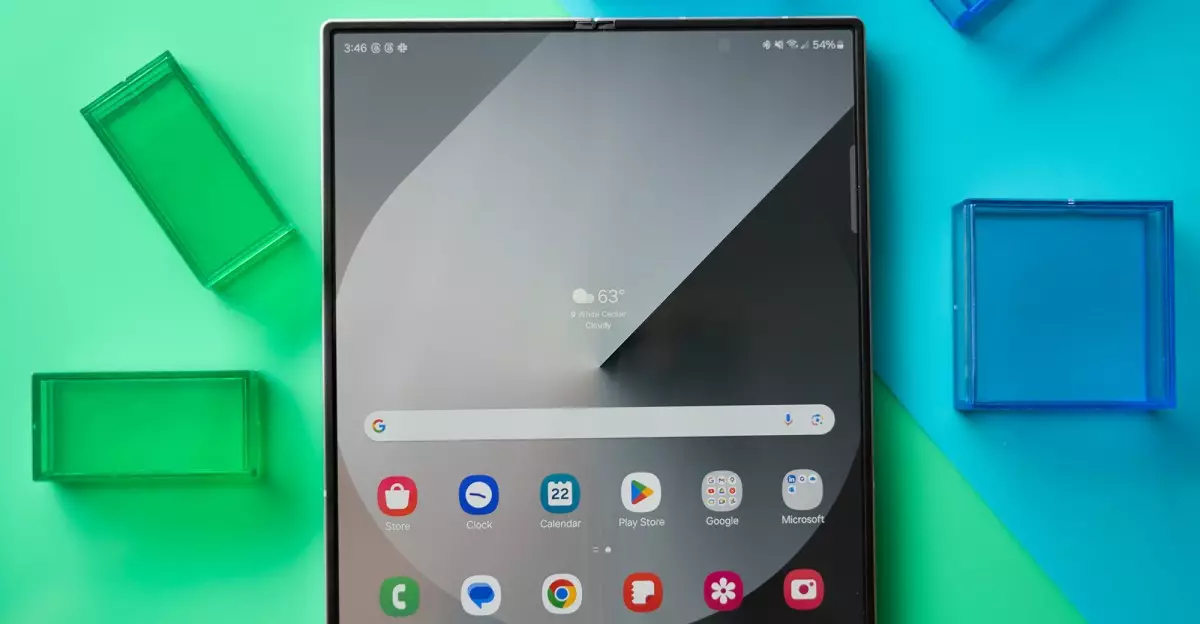Samsung has long been at the forefront of foldable technology, yet despite its pioneering efforts spanning a decade, widespread consumer adoption remains elusive. The latest rumors and leaks about upcoming devices suggest that Samsung is poised to make significant improvements, but the core question persists: will these innovations be enough to persuade a broader audience? As critics and enthusiasts alike scrutinize Samsung’s strategy, it’s clear that the company recognizes the need to go beyond incremental upgrades and push the boundaries of foldable smartphone design and affordability.
The challenge lies not only in technological advancement but also in market perception. Foldable devices still carry an aura of high cost and fragility, deterring the average consumer from making the leap. Samsung’s move to introduce an Ultra-branded foldable—presumably a premium device with cutting-edge features—is a step in the right direction. But will a higher price point and incremental design tweaks truly shift the needle? History suggests that while early adopters are excited about innovative form factors, mainstream consumers remain cautious, especially when durability and value are concerns.
Innovation or Reinvention: The Architectural Problems of Foldables
For years, Samsung has relied on slight refinements—faster processors, thinner profiles, and more seamless hinges—to entice consumers. However, these updates have often fallen short of solving fundamental issues. Foldables tend to be more vulnerable to dust and water damage—a persistent problem that hampers their longevity and trustworthiness. Despite promises of IP-rated durability, a truly dustproof, fully waterproof foldable has yet to become standard.
The question then becomes: can Samsung truly innovate around durability? Recent rumors point toward more ambitious designs, such as a thinner foldable that rivals the thickness of conventional smartphones, and larger cover screens that mimic flagship slab devices. These enhancements could reduce consumer hesitation, making foldables more competitive against traditional phones. Yet, the elephant in the room remains—the tradeoffs that come with these devices: higher repair costs, susceptibility to damage, and the psychological barrier of investing heavily in an arguably fragile piece of tech.
The Market’s Hesitant Sentiment and Samsung’s Strategic Response
Despite years of effort, foldable phones occupy a mere sliver—about 1.5 percent—of the global smartphone market, according to TrendForce data. Samsung’s brand dominance in this niche reflects timing and marketing efforts more than consumer demand. The limited uptake indicates that while early adopters and tech enthusiasts are intrigued, the broader market remains wary. Cost remains a significant barrier; even Samsung’s incremental models are priced far above typical flagship phones, making them less accessible.
Samsung’s apparent strategy to widen its foldable portfolio—introducing more affordable models, reducing device thickness, and expanding models to different price segments—suggests an understanding that diversity and affordability are crucial for market growth. The anticipated Ultra foldable might serve as an aspirational device—a showcase of what is technically possible—while more affordable options could entice budget-conscious consumers. Furthermore, rumors of a foldable from Apple arriving in 2026 have added a layer of excitement, potentially igniting consumer interest and pushing the entire industry forward.
However, there’s a risk: without addressing core durability and value concerns, these new models risk being perceived as niche luxuries rather than practical everyday devices. Samsung must balance innovation with reliability if they are to convert curiosity into consistent sales. Guarded optimism should be tempered with realism—an ultra-expensive, fragile device will only go so far.
Looking Beyond: The Promise of Industry-wide Transformation
The future of foldables lies not solely in Samsung’s hands but hinges on the broader industry’s willingness to reinvent the form factor. The anticipated entry of Apple into the foldable space could be transformative. Apple’s influence on design, ecosystem integration, and consumer trust could catalyze mass adoption—not just of Apple foldables but of foldables in general. Such a move might force Samsung to reevaluate its approach and accelerate efforts to improve durability, software integration, and pricing.
Even with this competition, Samsung’s potential to dominate the foldable market remains significant. The company’s historical ability to iterate, adapt, and dominate segments it helps pioneer suggests that a well-executed line of foldable devices—spanning premium to budget options—could finally tip the scales. The appearance of a foldable with additional hinges or new form factors might just be the push needed to ignite consumer curiosity into purchasing decisions.
Until then, Samsung’s challenge is clear: innovate boldly, listen intently to consumer feedback, and deliver devices that balance cutting-edge technology with practical durability and accessible pricing. Without these, foldables may continue to occupy a niche—aspirational but never truly mainstream. But if Samsung’s upcoming lineup delivers on its promises, the next chapter of foldable smartphones could be about redefining what’s possible in mobile tech, transforming curiosity into overwhelming consumer acceptance.


Leave a Reply